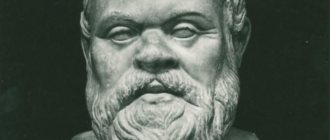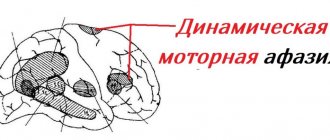To have enviable eloquence, to always win an argument, to be the center of attention at ease, to gain support or simply to clearly share your opinion, is this not the dream of each of us?
Originating in the era of antiquity with its Pericles, Socrates, Cicero and Caesar, in our information age, oratory finds a variety of applications - from teaching to politics.
Particularly indicative is the example of Demosthenes, who, despite physical disabilities, through long and persistent training of his skills, achieved world fame along with Alexander the Great. Not everyone is born with a “tongue without bones”, possessing all the necessary oratorical qualities.
As in any art, painstaking work on honing one’s own skills is important, artists work on strokes and strokes, musicians play scales for hours, and a skilled speaker improves the quality and content of the audience’s perception of his speech.
A real speaker seems to be “conducting” the listener; with a short change in intonation he is able to carry him along with his stream of thoughts and not let go.
Great articles to check out:
History of rhetoric from the Middle Ages to the Renaissance
Ancient Roman rhetoric
Ancient Greek rhetoric
By educational space we mean...
Zotova Larisa Anatolyevna
Renaissance
In the 16th century, a period marked by a huge increase in interest in the creation of vernacular rhetoric to satisfy new identities in the use of vernacular languages, the French philosopher Petrus Ramus and his followers simply completed the nascent fragmentation of rhetorical theory by establishing offices as separate specialties.
Ingenuity and predisposition were attributed to dialectic, the by then largely silent art of argument, which in the Ramist system emphasized self-evident axiomatic statements.
Memory was seen not as a matter of creating sound effects to enhance the retention of a speaker's ideas, but as a matter of efficient arrangement, so that separate attention to memory disappeared.
Oratory and pronunciation were considered the only two positions inherent in rhetoric, and they were subject to special censure.
Oratory, or style, became the center of rhetorical theory, and in the hands of the Ramists it was concerned almost exclusively with figures of speech. In fact, a strong emphasis on figures of speech developed from the late Middle Ages.
In responsible learning, as linguistic postures, postures, gestures of the mind in opposition to external reality, figures served a useful purpose; and in Renaissance education they were widely used, as in the modern manner, in the interpretation or analysis of discourse.
Less responsibly taught, the figures became mere decoration, like Aristotle's metaphor. In the Ramistic system, figures fluctuated between serving as arguments and serving as external decoration.
Figures of speech fell into even greater disrepute in the new culture of the Renaissance, which was characterized not only by an enthusiasm for printed colloquial language in a “plain” style, but also by a growing bewilderment about the doctrines of the passions.
For centuries, rhetoricians taught figures of speech as a means of “strengthening” ideas so that they could appeal to the passions of the audience. In Ramus, rhetoric abandoned its principles of intensification, leaving the passions to be discussed mainly by “moral philosophers,” who fought passionately over which passions were ordinary and which were not.
Ultimately, the passions themselves became the subjects or objects of the new scientists, who divorced them from moral or religious dogma.
It was only at the end of the 18th century that the doctrines of the passions again came to the attention of the rhetorician; however, at the time these figures were seen less as appeals to the passions of the audience than as manifestations of the psychology of the author or speaker—or, to use the metaphor used earlier, as places on the map of his mind.
Another part of the fragmented Ramist rhetoric, pronunciation or action, was rarely mentioned during the Renaissance; it had not yet been brought to perfection, it was the Ramists’ justification.
The first real impetus for the scientific study of spoken English came at the beginning of the 17th century by Francis Bacon, who, dealing with rhetoric in his works, called for a scientific approach to the study of gestures. The Ramists created a context in which Bacon's appeal would have special force and significance.
John Bulwer's chirology (1644) was the first work to respond, and in its wake came a plethora of studies of the physical, non-verbal expression of ideas and passions, including the work of Charles Darwin and Alexander Melville Bell in the 19th century and the modern work on the “silent language” of the American linguist Edward T. Hall.
Help from “Foma”. Samples of Russian oratorical classics
Famous judicial figures of the second half of the 19th - early 20th centuries, F.N. Plevako, A.F. Koni, P.S. Porokhovshchikov, were distinguished by their judicial eloquence; academic eloquence - university professors, historians T. P. Granovsky, V. O. Klyuchevsky, philologists I. I. Davydov, F. I. Buslaev, I. I. Sreznevsky - in the 19th century, N. I. Konrad, V. V. Vinogradov - in the twentieth century. Many church speakers were examples of spiritual eloquence: Metropolitan Philaret (Drozdov), Holy Righteous John of Kronstadt. We find examples of political eloquence among the Kiev princes, and among the associates of Peter the Great (Feofan Prokopovich), and in the proclamations of Alexander I, written on the occasion of Napoleon’s invasion, and in the speeches of figures of the early twentieth century - Stolypin, Witte and many others.
On the screensaver there is a fragment of the TEDxSydney photo
Traditional rhetoric
Traditional rhetoric is limited to the concepts and terms developed by the rhetoricians, or rhetoricians, during the classical period of ancient Greece, around the 5th century BC, to teach the art of public speaking to their fellow citizens in the Greek republics and, later, to the children of the wealthy under the Roman Empire.
Public speaking was considered the highest achievement of education, and rhetoric was at the center of the educational process in Western Europe for 2000 years.
Of course, in such a long tradition there were slight changes in emphasis, and for a long time even letter writing came within the realm of rhetoric; but she consistently maintained her emphasis on teaching, on instructing those who wanted to begin communicating with other people.
Varieties of speaker speech
There are several types of oratory, depending on who needs to be convinced, where the speech takes place, and what purpose it pursues. These include the following eloquences:
- Social and political. This is when they read reports touching on social, political and economic topics, speak at rallies, and conduct campaigning.
- Academic. This includes reading lectures, scientific reports or communications.
- Judicial. This type of eloquence is used by the prosecutor and defense attorney when speaking in court. With their speech they must convince of the guilt or innocence of the accused person.
- Social and everyday life. It is used by all people when making speeches at anniversaries, feasts or funerals. This also includes small talk, which does not require disputes or discussions, but is characterized by ease and simplicity of perception.
- Bogoslovskoe. This eloquence is used in churches, for example, when believers give a sermon or other speech in a cathedral.
- Diplomatic. This type involves compliance with ethical standards in business speech. This is necessary during business negotiations, correspondence, when drawing up official documents, as well as during translation.
- Military. This type of eloquence is used when calling for battle, issuing orders, regulations, and transmitting information via radio communications.
- Pedagogical. This includes presentations by teachers and students, both oral and written. This also includes giving lectures, which is considered a complex act of pedagogical communication.
- Internal, or imaginary. This is the name of the dialogue that every person conducts with himself. This type involves mental preparation for oral presentation to the public, as well as for written transmission of information, when a person reads what is written to himself, remembers something, reflects on something, and so on.
Based on the above, we can conclude what rhetoric is and why society needs it. Rhetoric as the science of oratory involves the study of the correct pronunciation of speech in front of an audience in order to somehow influence the people listening to it. With its help, speakers acquire skills that allow them to make their speech correct, appropriate, and most importantly, convincing.
Modern rhetoric
Modern rhetoric has shifted its focus to the auditor or reader.
Literary criticism has always borrowed stylistic terms from rhetoric, such as antithesis and metaphor were invented by classical rhetoricians.
Modern rhetoric is much more than a set of terms. The point of view from which he views the text differs from that of other disciplines.
History, philosophy, literary criticism and social sciences tend to view a text as a kind of map of the author’s consciousness on a particular topic.
Rhetors, accustomed to their traditional discipline of viewing communication from the communicator's point of view, view the text as an embodiment of intention, not as a map.
Concern with audience, intention, and structure is a hallmark of modern rhetoric. It is as much connected with the process of interpretation, or analysis, as with the process of creation, or being.
Modern rhetoricians identify rhetoric with a critical perspective rather than with a work of fiction. They justify the expansion of their interests into other literary fields on the basis of a change in thinking about the nature of the human mind.
Related posts:
- Ancient Greek rhetoric The reasons for the emergence of the art of rhetoric in Ancient Greece. Its founders. Influence…
- Why a teacher needs to master the basics of pedagogical rhetoric Rhetoric teaches us how to correctly convey our thoughts to our interlocutors in...
- What is "War and Peace" about? Summary of the novel “War and Peace” by chapters. All answers...
- Features of the formation of sensory standards in young children Formation of sensory standards in preschool children. The tasks of forming sensory…
How to choose a topic
You need to choose a topic that can be developed during the presentation. The information must be important and understandable to the audience. How to perform, get to know your interests, upbringing, education, activities. The interest of the public depends on factors:
- interests of listeners;
- group and topical;
- specific and novelty of the topic;
- inherent elements of conflict.
Let's consider each factor separately.
- Current topics: life, death, love, health, family relationships, money and property, profession, career and social status. Topics will be of interest to different audiences. The topic may cause danger in listeners, or it may form an idea of vital elements. The main thing is to start the conversation with something important. For example, a meeting at an enterprise. If a speaker wants to captivate his audience, then he needs to start his speech with a salary. In this case, workers and employees will greet you with deep understanding. If this is a meeting at school, you should not start with money issues, it is better to start the speech with the children's progress.
- Group interest is considered the basis for speech. The meeting takes place in a group where graduate students gather for an internship abroad. In this case, you need to start talking about national traditions, earnings, warnings and temptations. This will be interesting and useful information for students. If you speak in a work group, then you can consider issues about corruption of self-government, how to organize leisure time for young people.
- Current interest. It is caused by current events, for example: elections, news of the day, a possible epidemic and how to deal with it, a referendum, and so on. Absolutely all people are interested in the issue of fair wages and timely payments. It is important to be able to address relevant topics in time when considering current topics. If the speaker is a representative of an insurance company, then the listeners are interested in the topic of how to insure property.
- Specific interest is caused by listening and feeling. Start the conversation with specific things that surround you, for example, cars, animals, natural phenomena, food. All things have a close connection with work, convenience and entertainment. If you touched on the topic of smoking, then topics about the dangers of smoking will be interesting.
- New topics are interesting to people. Listeners will learn about how people live in different countries, about their traditions, world travels, and the wonders of the future and past of the world. New topics must be supported by facts. If a person does not have an idea about the topic of the speech, he will not be able to understand and listen to it.
- Conflicts in speech. This is one of the elements in prepared and formed speech.
the main idea
Before you even sit down to write your speech, you must determine its main idea. This key point that you want to convey to the audience should be concise, capacious, “fit in a matchbox.”
Stop, look and make a plan: first, highlight the key ideas, and then you can supplement and clarify them with real-life examples or quotes.
As Churchill said, a good speech is like a symphony: it can be performed at three different tempos, but it must maintain the main melody.
First phrase
All successful speakers place great importance on the first sentence of their speech. It must be powerful and definitely evoke a positive response from the audience.
The first phrase is, in TV terminology, the “prime time” of your speech. At this moment, the audience is at its maximum size: every person in the room wants to look at you and find out what kind of bird you are. In just a few seconds, the screening of listeners can begin: someone will continue the conversation with a neighbor, someone will bury their head in their phone, and someone will even fall asleep. However, everyone without exception will listen to the first phrase.
Foreign speakers
There are many eloquent foreign figures in the 20th century. This is Hitler, Winston Churchill.
Adolf Gitler
Hitler is a powerful speaker who knows how to keep the audience on the edge of their seats. There is no leg movement. Hitler used hand gestures that were sharp and emotional. A noticeable feature of his speech is the strong pauses with which Hitler emphasized what was important.
Hitler prepared his speech in advance and wrote it on a piece of paper. His words are overly colored with emotion. Hitler was overwhelmed with emotion. Slowing down and speeding up speech attracted attention. Hitler used this technique in every speech.
His ideas are far from the ideas of the 20th century world, but people followed him. It’s not for nothing that Hitler is called the spokesman of evil!
Winston Churchill
Winston Churchill carefully prepared for his speech. Facial expressions, hand gestures, and leg position were always thought out in advance. Winston Churchill polished the text to perfection. He was a charismatic politician who often used humor. Winston Churchill came up with his best sayings long before he spoke them.
Inspired by his ideas, Winston Churchill infected those around him with them. Churchill actively used metaphors and comparisons. Winston tried to be calm and natural. He naturally suffered from a lisp, but Winston Churchill was able to overcome this defect.
James Humes
James Humes has mentored five American presidents. His lessons will help you achieve leadership through public speaking. James Humes shows that almost anyone can master eloquence.
There are people whose talent for eloquence is given by nature. But this gift can also be mastered. This requires a little work. Famous and outstanding personalities of the world always have such a gift. They more often than others become heads of state and political parties.
The appearance of the company's leader, his leadership qualities and sales skills determine the success of the enterprise. This is known to PR specialists who write speeches for managers, think over their appearance, teach them how to speak in public and how to place accents correctly. However, even the best PR specialist will not be able to independently turn an ordinary person into a bright personality, a hero of public speeches.
The book by James Humes, a famous writer and former speechwriter for five American presidents, reveals some of the secrets of oratory and creating charisma. Having mastered the techniques offered by the author, you will gain confidence and learn how to easily and successfully cope with public speaking.
Reading
Reading a speech from a sheet of paper with your eyes downcast does not, to put it mildly, excite the audience. What should we do then? Is it really necessary to memorize a half-hour long speech? Not at all. You need to learn to read correctly.
The first rule of reading a speech: never say words while your eyes are looking at the paper.
Use the SOS technique: look - stop - say.
For training, take any text. Lower your eyes and take a mental picture of a few words. Then raise your head and stop. Then, looking at any object at the other end of the room, tell what you remember. And so on: look at the text, stop, speak.
The final
Even if your speech was inexpressive, a successful ending can fix everything. To make an impression in the finale, tune in, call on your emotions to help: pride, hope, love and others. Try to convey these feelings to your listeners the way great speakers of the past did.
Under no circumstances should you end your speech on a minor note, as this will simply destroy your career. Use uplifting quotes, poems or jokes.
Good speech by the speaker.
Good speech by the speaker. Examples of speeches in this article...
We remember the famous speakers of the ancient world.
Such as Demosthenes and Cicero.
We know the speakers of the past twentieth century.
Let's take a look at some of the performances.
The famous speech of Nikita Sergeevich Khrushchev at the UN
Many have heard of this speech, but few have seen it. This is where Nikita Sergeevich bangs his fist on the podium, and UN members knock their feet in protest. Watch this video - less than a minute.
But these speakers are already a thing of the past.










